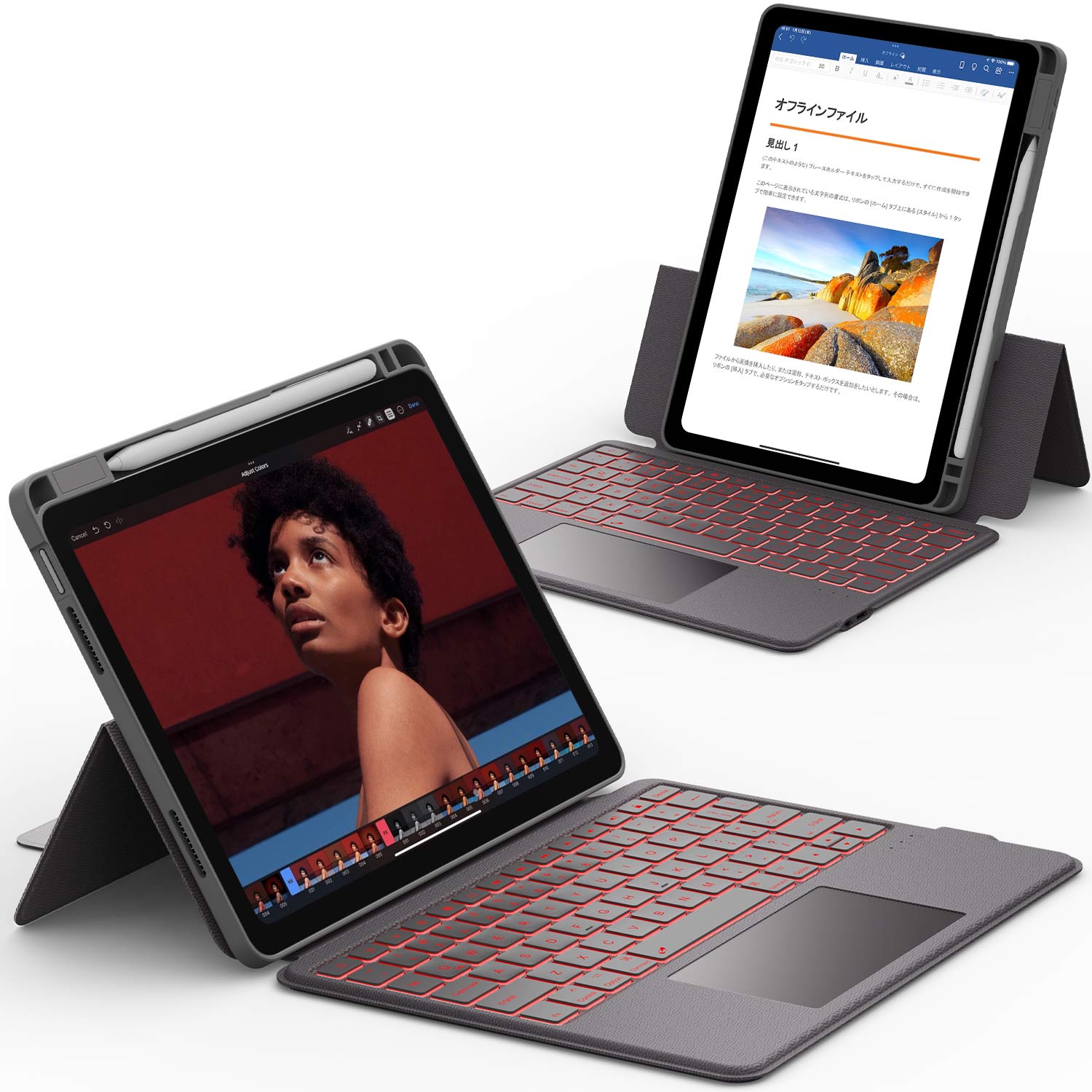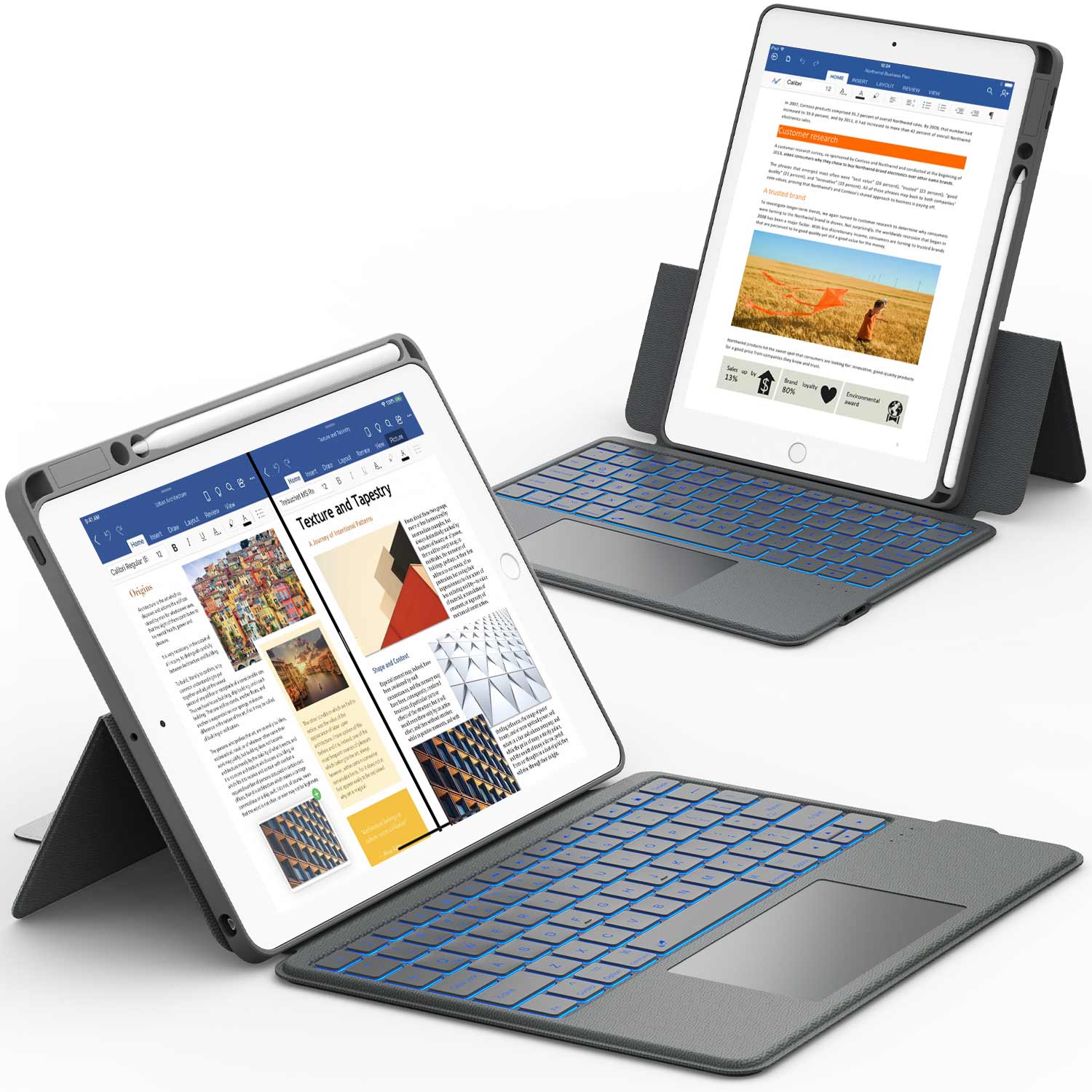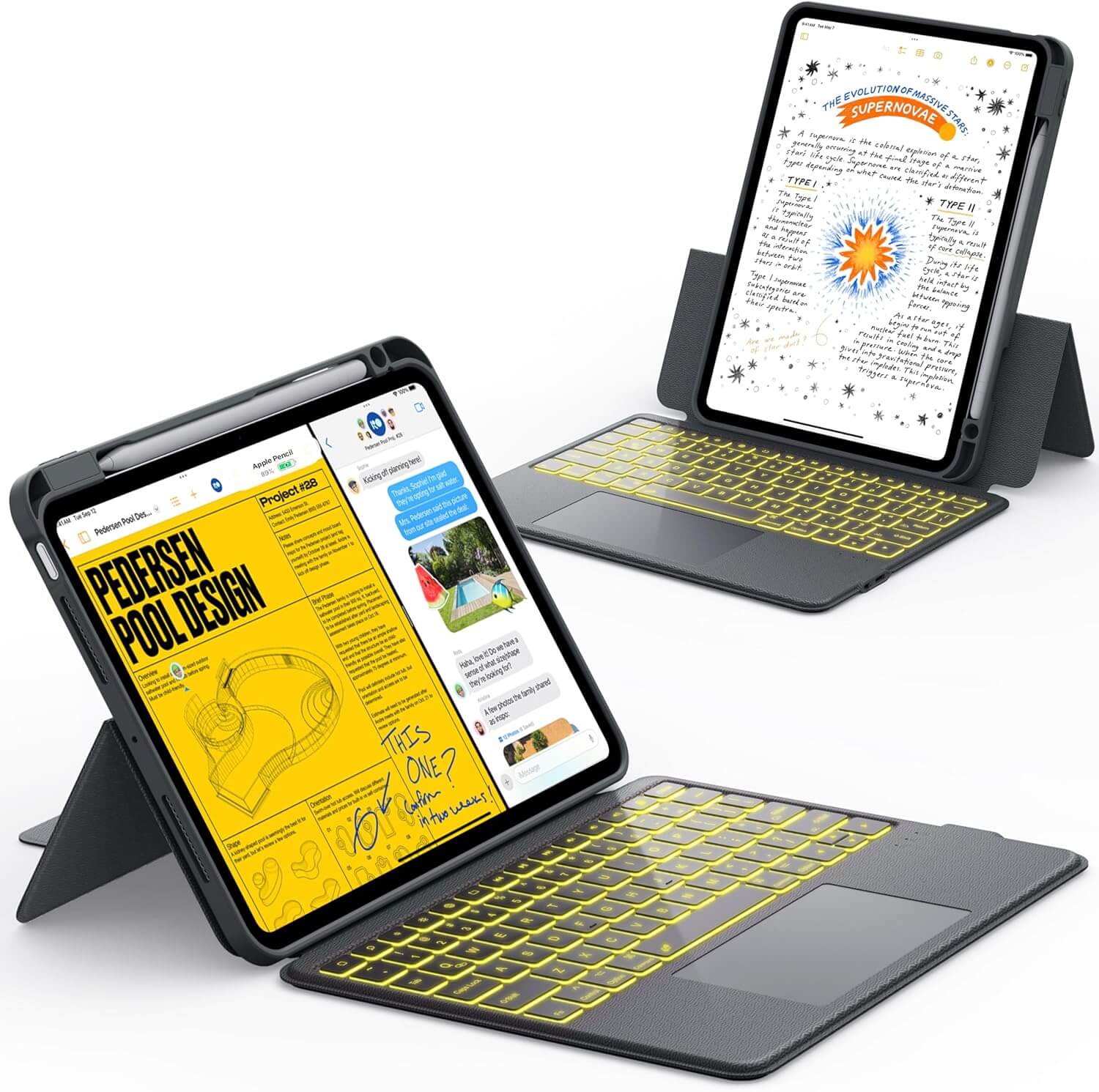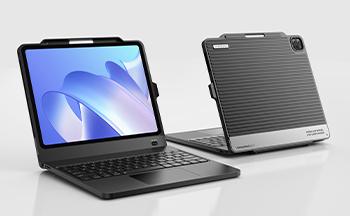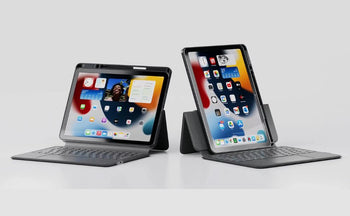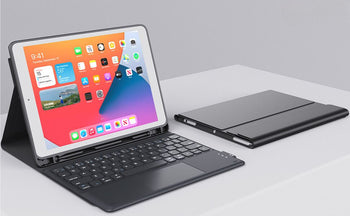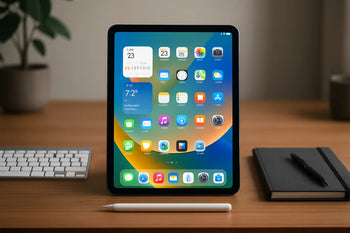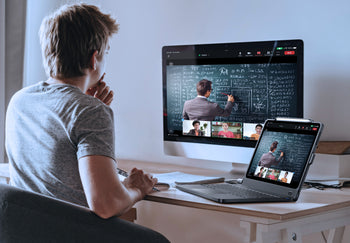In today's world, screens are everywhere, and that includes our kids' lives. Tablets, phones, and computers have become a huge part of daily routines. But too much screen time can cause problems for children, like trouble sleeping, bad grades, and even addiction. As a parent, it's really important to keep an eye on how much time your child spends on screens and help them cut back if needed. This article will talk about how to tell if your child is spending too much time on their iPad and what you can do about it.
Key Takeaways
- Recognizing when a child is spending too much time on their iPad is the first step to helping them.
- Setting clear limits on iPad use can help kids learn balance.
- Encouraging other fun activities helps kids find new interests beyond screens.
- Parents can show good screen habits themselves to teach their kids.
- Talking openly about screen use helps kids understand why limits are important.
Recognizing Signs of iPad Addiction in Children
It's easy to let kids use iPads for hours, especially when you need a break. But how do you know if it's gone too far? Recognizing the signs of iPad addiction early is super important. It's not always obvious, but there are definitely things to watch out for.
Excessive Time on Devices
One of the first things to notice is how much time your child spends glued to their iPad. Is it just a couple of hours on weekends, or are they on it from the moment they wake up until bedtime? If screen time is consistently cutting into other important activities, that's a red flag. It's more than just liking the iPad; it's about needing it.
Behavioral Changes When Denied Access
Pay attention to how your child reacts when you try to take the iPad away. Does a simple request turn into a full-blown meltdown? Do they get unusually angry, anxious, or even just really, really upset? These kinds of reactions can be a sign that they're overly dependent on the device. It's like they're going through withdrawal.
Impact on Sleep and Academics
Is your child having trouble sleeping? Are their grades slipping? Too much screen time can mess with sleep patterns and make it hard to focus on schoolwork. The blue light from screens can interfere with melatonin production, making it harder to fall asleep. Plus, if they're spending all their time on the iPad, they're probably not doing their homework. It's a pretty common issue, and it's worth keeping an eye on.
It's important to remember that every child is different. What might be a problem for one kid might not be for another. The key is to look for changes in behavior and patterns that suggest the iPad is becoming more of a problem than a source of entertainment or education.
Implementing Effective Screen Time Limits

It's tough, but setting screen time limits is a game-changer. It's not just about cutting down the hours; it's about creating a healthier balance. Let's be real, kids won't always love it, but consistency is key. Think of it like setting bedtime – annoying at first, but essential for well-being.
Setting Clear Daily Boundaries
Establish specific times for device use. This could be after homework, before dinner, or only on weekends. The important thing is to make it predictable. Post a schedule where everyone can see it. This helps avoid constant negotiations and arguments. For example, maybe from 4 PM to 5 PM they can use their iPads, but after that, it's family time. It's also important to consider the quality of children's digital interactions rather than just the time spent.
Scheduling Device-Free Times
Designate certain times of the day as completely screen-free. This could be during meals, family game night, or before bedtime. The goal is to create opportunities for face-to-face interaction and other activities.
- Dinner time should be a no-phone zone.
- Weekends could include a "tech-free Saturday morning."
- Bedtime routines should exclude screens to promote better sleep.
Creating device-free times helps kids (and adults!) disconnect and engage in the real world. It's about being present and fostering connections without the distraction of screens.
Utilizing Built-In Device Controls
Both iOS and Android devices have built-in parental controls that can help you manage screen time. Explore these features to set time limits, restrict access to certain apps, and monitor usage. These tools can be surprisingly effective. For instance, you can set a daily time limit for gaming apps or block access to social media during school hours. It's all about finding what works best for your family and using the technology to your advantage.
Want to make your child’s iPad time more productive? The Chesona Keyboard Case for iPad turns screen time into learning time. With its kid-friendly design, comfortable keyboard, and sturdy stand, it’s perfect for homework, writing stories, or coding projects.
Encouraging Alternative Activities and Interests

It's easy for kids to get stuck in a cycle of iPad use, but offering them other things to do can really help break that pattern. The key is to find activities they genuinely enjoy, making the transition away from screens much smoother. It's not about forcing them into something, but about discovering new passions and interests.
Promoting Outdoor Play and Exercise
Getting kids outside is a fantastic way to reduce their reliance on iPads. Outdoor play offers a ton of benefits, from physical health to improved mood. Think about what your child likes to do. Do they enjoy riding bikes, playing sports, or just exploring nature? Organize family hikes, bike rides, or trips to the park. Even simple activities like playing tag in the backyard can make a big difference. Consider signing them up for a sports team or a local recreation program to encourage regular physical activity and social interaction.
Fostering Hobbies and Creative Pursuits
Encourage your child to explore different hobbies and creative outlets. This could include anything from painting and drawing to playing a musical instrument or building models. The goal is to find something that captures their attention and allows them to express themselves. Provide them with the necessary materials and resources, and let them experiment. Maybe they'd enjoy joining a coding club, learning a new language, or writing stories. The possibilities are endless, and you might be surprised at what they discover. Creative activities can be a great way to keep them engaged and entertained without relying on screens.
Encouraging your child to write stories or explore coding? The Chesona Keyboard Case for iPad makes creative pursuits even easier. Its lightweight design includes a responsive keyboard and a secure Apple Pencil holder, perfect for school projects or artistic hobbies.
Encouraging Social Interaction
Spending time with friends and family is crucial for kids' social and emotional development. It's easy for iPads to become a substitute for real-life interactions, so it's important to actively encourage them to connect with others. Arrange playdates with friends, plan family game nights, or involve them in community activities. Consider signing them up for clubs or organizations where they can meet new people who share their interests. Face-to-face interaction helps them develop important social skills and build meaningful relationships. It's about finding a balance between screen time and real-world engagement.
It's important to remember that finding the right alternative activities may take some time and experimentation. Be patient and supportive, and let your child lead the way. The goal is to help them discover new passions and interests that will enrich their lives beyond the screen.
Modeling Healthy Digital Habits for Children
It's easy to tell kids to put down their iPads, but are we, as parents, setting the right example? Kids are always watching, and they pick up on our habits, good or bad. If we're constantly glued to our phones, it sends a confusing message. Leading by example is super important here.
Practicing Mindful Screen Use
It's not just about how much time we spend on screens, but how we spend that time. Are we mindlessly scrolling, or are we using technology intentionally? Being aware of our own usage is the first step. Try these:
- Set specific times for checking email and social media, instead of doing it constantly.
- Be present during conversations, putting your phone away.
- Use technology for learning or creating, not just consuming.
Establishing Device-Free Zones
Designating certain areas or times as tech-free can make a big difference. This isn't just for the kids; it's for the whole family. It's about creating spaces where we can connect without the distraction of screens. For example:
- No phones at the dinner table.
- Bedrooms are screen-free zones.
- Family game night is a tech-free zone.
Prioritizing Real-World Engagement
It's easy to get caught up in the digital world, but it's important to remember the real world is still out there. We need to show our kids that there are plenty of fun and interesting things to do that don't involve screens. Some ideas:
- Plan family outings to parks, museums, or local events.
- Encourage hobbies like reading, painting, or playing sports.
- Schedule regular family game nights or movie nights (yes, even movies can be real-world engagement!).
It's not about demonizing technology; it's about finding a healthy balance. By modeling good digital habits, we can help our kids develop a positive relationship with technology and learn to use it in a way that enhances their lives, rather than detracts from them.
Creating a Screen-Free Home Environment

It's tough to get kids to cut back on screen time if their environment is constantly filled with tempting devices. Think of it like trying to diet while surrounded by junk food – it's just setting them up for failure. Let's look at some ways to make your home a haven from screens.
Removing Devices from Bedrooms
Bedrooms should be sanctuaries for sleep and relaxation, not mini-arcades. Having a TV, tablet, or phone in the bedroom makes it way too easy for kids to sneak in extra screen time, especially late at night. This can seriously mess with their sleep schedule. Consider a basket in the living room where devices "sleep" overnight. This simple change can make a big difference in their sleep quality and overall well-being. It also allows parents to monitor screen-related issues like cyberbullying.
Designating Tech-Free Family Spaces
Certain areas of the house should be declared screen-free zones. The dining table is a great place to start. Meals should be a time for family connection and conversation, not for zoning out with a screen. The living room could also have designated times where screens are off, encouraging family games or reading. It's about creating spaces where interaction and engagement are prioritized over digital entertainment. This encourages low-prep activities for the whole family.
Promoting Non-Digital Relaxation
It's important to offer alternatives to screen time for relaxation. This could include reading books, listening to music, doing puzzles, or practicing mindfulness exercises. Create a cozy reading nook, stock up on art supplies, or have a designated area for board games. The goal is to show kids that there are plenty of enjoyable ways to unwind and de-stress without relying on screens.
Creating a screen-free home environment isn't about deprivation; it's about creating balance and promoting healthier habits. It's about showing kids that there's a whole world of activities and experiences to enjoy beyond the screen.
Leveraging Parental Control Applications
Okay, so you're trying to get a handle on your kid's iPad use, and you've tried talking, setting timers, and maybe even hiding the charger (we've all been there, right?). But sometimes, you need a little extra help. That's where parental control apps come in. They're not a magic bullet, but they can be a pretty useful tool in your arsenal.
Monitoring Device Usage with Apps
These apps let you see exactly what your kids are doing on their iPads. Which apps they use the most, which websites they visit, and how much time they spend on each. It's like having a little window into their digital world. This can be super helpful for understanding their habits and spotting any potential problems early on. For example, if you notice your child is spending hours on a social media app you've never heard of, you can look into it and see if it's age-appropriate.
Setting Content Filters and Restrictions
One of the best things about parental control apps is the ability to filter content. You can block certain websites, apps, or even entire categories of content. This is especially useful for younger kids who might accidentally stumble upon something they shouldn't see. Most apps let you customize the filters based on your child's age and maturity level. It's not foolproof, but it adds an extra layer of protection.
Utilizing Time Management Features
This is where you can really start to take back control of screen time. These apps let you set daily or weekly time limits for specific apps or for the iPad as a whole. You can also schedule specific times when the iPad is off-limits, like during dinner or bedtime. Some apps even have features that automatically lock the device when the time limit is up. It's like having a built-in digital curfew.
Parental control apps aren't about being a helicopter parent. They're about giving you the tools you need to help your kids develop healthy digital habits. It's about finding a balance between letting them explore and keeping them safe.
Fostering Open Communication About Screen Use

It's easy to fall into the trap of just setting rules and expecting kids to follow them, but that rarely works. A better approach is to talk openly about screen use. This means creating a safe space where kids feel comfortable sharing their thoughts and feelings without judgment. It's about collaboration, not just dictation.
Discussing the Risks of Excessive Screen Time
Instead of just saying "screens are bad," explain why. Talk about how too much screen time can affect sleep disturbances, focus, and even mood. Use age-appropriate language and examples they can relate to. For younger kids, you might talk about how it takes away from playtime with friends. For older kids, you could discuss the impact on their grades or social life. It's also important to acknowledge the benefits of technology, like learning and connecting with others, to show that you're not completely against screens.
Involving Children in Setting Boundaries
Kids are more likely to follow rules they helped create. Instead of imposing strict limits, involve them in the process. Ask them how much screen time they think is reasonable and what times of day are best for them. You might be surprised by their answers! This approach gives them a sense of ownership and responsibility. Negotiate and compromise to find a balance that works for everyone. Remember, the goal is to teach them self-regulation, not just blind obedience. This can also help prevent social isolation that can come from feeling controlled.
Empowering Kids to Make Healthy Choices
Ultimately, the goal is to help kids develop the skills to make smart choices about their screen use. This means teaching them to recognize when they've had enough and to find alternative activities. Encourage them to explore their interests and hobbies. Help them develop a sense of self-awareness so they can identify when they're using screens to avoid boredom or negative emotions. Give them the tools and support they need to make healthy decisions on their own.
Open communication is key. It's not about being the screen police, but about being a guide and a partner in helping your kids navigate the digital world responsibly. It's an ongoing conversation, not a one-time lecture.
Wrapping Things Up
So, yeah, too much screen time can really mess with kids. We're talking sleep problems, bad grades, and even getting hooked on their devices. As parents, we've got to keep an eye on how much time our kids spend on screens and step in if it's getting out of hand. This article talked about how to tell if your kid is too attached to their device and what you can do to help them cut back. It's not always easy, but it's worth it for their well-being. Remember, it's about finding a good balance, not getting rid of screens completely. They're part of life now, so let's help our kids use them wisely.
As you guide your child toward balanced iPad use, consider accessories that make screen time more meaningful. The Chesona Keyboard Case for iPad offers a durable design, a detachable keyboard for easy typing, and a stand for comfortable viewing—ideal for homework or creative projects.
Frequently Asked Questions
How can I tell if my child is spending too much time on their iPad?
It's important to watch for certain signs. If your child spends too much time on their device, gets upset when you take it away, has trouble sleeping, or if their schoolwork suffers, these could be signs of a problem. They might also pull away from friends or family because of their device use.
What are some simple ways to limit my child's iPad use?
Setting clear rules is a great start. Decide on specific times your child can use their iPad and for how long. Make sure there are times when no one uses screens, like during meals or before bed. You can also use the built-in settings on the iPad to help control usage.
What can I do to get my child interested in things other than their iPad?
Encourage your child to try new things! Suggest playing outside, doing crafts, reading books, or playing board games. Help them discover hobbies that don't involve screens, and make sure they spend time with friends in person.
Should I also change my own screen habits to help my child?
Kids learn by watching us. So, try to use your own devices wisely. Don't be on your phone all the time, especially during family time. Create
Is it important to keep iPads out of my child's bedroom?
Yes, it's a good idea to make bedrooms screen-free zones. This can help improve sleep and reduce the temptation to use devices late at night. Also, try to have some areas in your home where no one uses screens, like the dining room.
Are there any apps that can help me manage my child's iPad time?
Many apps can help! These apps let you see how much time your child spends on their iPad, block certain websites, and set time limits for games or social media. Look into the parental control features that come with your child's device too.
